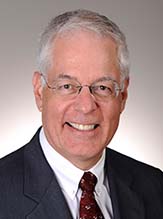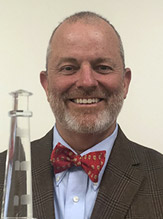
What positive Supply Chain achievements turn C-suite heads?
Ten healthcare supply chain executives and leaders share what motivates the C-suite to turn heads as opposed to scratching them.

Jim Francis
Jim Francis, Bellwether Class of 2017, Chair, Supply Chain Management, Mayo Clinic
“The obvious example is value creation. Today, value can be delivered in many forms other than the obvious price discounts or rebates. Ideally, value trickles down to the financial statements and key metrics that demonstrate what supply chain has delivered. I have never been an advocate of ‘being in the C-suite’ as a precursor to success. I would much rather be with supply chain staff where you can make immediate contributions and have interactions with other team members. What is more important than being in the C-suite is your ability to develop key relationships with physicians, staff and leadership. If you have trusted relationships, supply chain management will always be viewed as strategically important to the organization.

Rand Ballard
Rand Ballard, Chief Customer Officer, Vizient Inc., Founding Sustaining Sponsor
“The pinnacle of a positive achievement is the clinical integration of the supply chain. When a Supply Chain leader is able to positively impact results for the Chief Quality Officer, Chief Strategy Officer and Chief Clinical Officer, then the C-suite will definitely notice.”

Siobhan O’Bara
Siobhan O’Bara, Senior Vice President, Industry Engagement & Services, GS1 US Healthcare, Silver Sustaining Sponsor
“In this industry, whether you are a manufacturer of a medical product, a distributor, or a user in a healthcare setting, the ultimate driver behind everything you do is patient care and safety. The opportunity to deliver patient safety comes from providing the right product, at the right time, through the right delivery, at the right dosage to the right patient. All of that relies on a supply chain that facilitates good forecasting, demand and insight, quality production, and efficient distribution. The ability to manage these activities determines how successful the organization can be.
“When healthcare executives have a clear understanding about how supply chain can help deliver quality healthcare experiences and outcomes, use cases have shown that effective supply chains running on good data can significantly improve operations. Standardized and structured data is key to achieve efficiency and successfully evolve new models of delivering healthcare.
“Telehealth and the devices that enable it are poised to transform healthcare in powerful new ways. There are smart devices in development that can feed all kinds of diagnostic information over the internet to a patient’s physician, making it possible to deliver care without physical presence – a convenience for many, but a huge breakthrough in the availability of healthcare for people in remote areas, people who are homebound and people in third-world countries, not to mention enabling a more cost-efficient model of delivery. It will rely on standardization of all the relevant information, including diagnostic codes and other details about the healthcare experience, and then having a supply chain that allows that exchange of information to update patient records and to culminate in a transaction.
“Organizations that pay close attention to supply chain will be able to utilize it to differentiate how they care for people. Telemedicine could potentially trigger an entirely new quality of healthcare that is the culmination of ‘everything that can be connected will be connected.’ As it evolves, as the internet of things disrupts healthcare delivery, the supply chain will be responsible for containing and moving the data that makes it work. More than ever, the backbone for success will be the quality of the master data driving the system.
“Quality data behind the supply chain is also a critical component for meeting regulatory requirements. The FDA’s Drug Supply Chain Security Act (DSCSA) and the Unique Device Identification (UDI) rule both mandate the use and capture of unique product identifiers through the supply chain and at point of use to improve traceability and patient safety. Every healthcare organization today is highly focused on implementing systems and processes to meet these requirements.”

Mary Starr
Mary Starr, Bellwether Class of 2019, Vice President, Member Services, Greenhealth Exchange
“The impact of buying decisions influence more than patient outcomes and costs or revenue. These decisions can bring better paying jobs to depressed communities, which have lasting health effects. Or they can either help or hurt the environment, including the climate and air quality of the very same people healthcare organizations are charged with healing. This connection for supply chain demonstrates the ability to impact larger strategic initiatives for the organization.”

Shaun Clinton
Shaun Clinton, Senior Vice President, Supply Chain, Texas Health Resources, Bronze Sustaining Sponsor
“Supply Chain must be able to draw strong lines between its performance and the overall economic health of the organization and must be willing to take the blame if this performance is less than optimal.”

Tom Lubotsky
Tom Lubotsky, Senior Vice President, Supply Chain, Allina Health, Bronze Sustaining Sponsor
“Certainly, the ability to reduce non-labor costs to historic levels within a healthcare system will generate the attention and interest of C-suite leaders. With so much focus on better cost control in light of a more challenging reimbursement climate, these efforts are largely important. Supporting reduction of supply chain overhead costs that center on procure-to-pay efficiencies while increasing the level of requistioner satisfaction could indeed create notable interest. In addition, the contribution that supply chain can lend to the appropriateness and variable use and control of products/services, especially as we advance our value-based contracting with the insurance industry, will certainly be of high interest among healthcare system leaders navigating in this space. Finally, furthering a healthcare system’s growth initiatives – whether it be by commercializing supply chain opportunities or by creatively plowing into the home market offering retail products/services as a new source of revenue – would also be additional achievements that would be of keen interest.”

Dee Donatelli
Dee Donatelli, Bellwether Class of 2015, Vice President, Professional Services, symplr
“Integration clinically is the next generation for supply chain management. Being invited to participate in clinical effectiveness. When standards of care include the standardization of technology, Supply Chain will have made a much greater impact by providing actionable information regarding product variation across the procedure. Value will always be quality over cost.”

George Hersch
George Hersch, Bellwether Class of 2019
“Complex initiatives like an IV fluid conversion with a high six- or seven-figure savings usually attracts the attention of senior executives. These initiatives involve a high level of collaboration among nursing, supply chain, IT, anesthesiology, and pharmacy. Stepping outside the organization to collaborate with other healthcare organizations also attracts attention. These types of partnerships through GPO performance groups, state-wide collaboratives, or partnering independently with other healthcare organizations in your region can bring significant savings through supply and purchased services contract standardization.”

Carl Meyer
Carl Meyer, Bellwether Class of 2019, Vice President, The Wetrich Group
“Being able to tie the programs, processes, services and support that Supply Chain provides to metrics that measure patient outcomes, patient satisfaction, the organizations financial performance, etc., in a logical format that the C-suite can easily and quickly review provides the basis to elevate the status of Supply Chain and to begin to get a foot into the door of the C-suite.”

Ed Hardin
Ed Hardin, Bellwether Class of 2020, Vice President and Chief Supply Chain Officer, Froedtert Health, before his passing in January 2021
“The right metrics are those that have been culled from our customers, thus balanced and resonate across several disciplines. These metrics must be aligned with organizational strategies and, most importantly, can measure Supply Chain’s positive contribution to those strategies. For instance, if Supply Chain can show that their cost savings initiatives in fact lower total supply cost per adjusted discharge, then the total realized savings of cost savings initiatives is relevant and will turn the heads of the C-suite. Conversely, if Supply Chain reports on these savings, yet the organization experiences an increase in supply cost per adjusted discharge, then the communication around savings rings hollow. Still another example is the percentage of value analysis decisions with clinical evidence. If, on one hand, Supply Chain by policy and through technology has increased the use of evidence-based information to drive value analysis decisions – a metric Froedtert Health uses – but clinical outcomes at the enterprise level decline or the number of product recalls increases, then such a metric falls on deaf ears.”